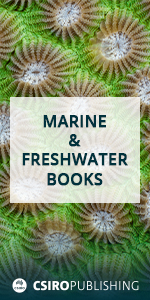Marine and Freshwater Research
Volume 73
Number 6 2022
The optimal utilisation of resources is a core area of interest for economists. Wetland, marine and coastal ecosystems provide critical resources for human survival. A systematic review showed that the top 10 mainstream journals in economics have published only eight articles with these word combinations, whereas other journals indexed in Scopus have published 1116 articles between 1981 and 2020.
Catchment-scale conservation of freshwater systems is severely limited. We argue that conservation values should be assigned to river reaches and wetlands, whether pristine or disturbed, at whole-system scales, to enhance the current management practice. A simple process based on typology and expert elicitation is outlined, and would be a precursor to prioritisation of protection and rehabilitation actions.
Development of catchments can have substantial impacts on the natural features and connectivity of river habitats that govern the behaviour and success of fish populations. Using acoustic telemetry, we show that Australian bass within the Lane Cove River display nocturnal behaviours and spawning migrations similar to those reported elsewhere, despite heavy urbanisation of the catchment. With proper design, fishways can successfully mitigate impediments to fish movements and facilitate movements that mirror those of natural populations.
We used an exposure apparatus to study fitness-related traits of the sea urchin, Strongylocentrotus intermedius, following stranded heavy fuel oil (HFO) subacute exposure (21 days). Stranded HFO exposure had significant negative effects on food consumption, covering behaviour, righting response and gonadosomatic index of sea urchin. The study provides valuable information to the ecological risk assessment of oil spillages.
Animals living in mangroves on tropical coastlines are threatened by forest clearing. In Kenya, we investigated how the degree of mangrove forest clearing (i.e. degradation) affects species’ presence and abundance and found that specialist species decrease and generalists increase in abundance with degradation. Most epibenthic faunal species play important roles in keeping mangroves healthy, and a taxonomic and functional reduction with increased generalism in species composition can negatively affect ecosystem functioning and benefits to humans.
Little is known about seed banks of lakes. Our study showed that the soil seed bank distribution in a lake at Thirlmere Lakes National Park, NSW, Australia, reflects the wetland plants examined at the time of a drying event. The ability of such seeds to survive burial, either submerged or desiccated, even after long periods, may prove to have advantages for plant survival and establishment.
The Peel–Harvey Estuary located in the south-west of Western Australia experienced severe degradation in the 1970s as a result of agricultural activities. An opening to the ocean increased water exchange by marine currents, and, over time, improved the estuarine water quality. Despite a changing environment, including reduced river runoff, the same two mollusc species that dominated in the 1970s still dominate the mollusc assemblages in 2020.
Botryllus schlosseri and Diplosoma listerianum are proliferating in Iceland. Seawater temperature is limiting their spread beyond the south-western region. The scenario might change with climate change and the ocean warming. Field management actions to reduce their abundance should be conducted during the winter months.
This manuscript presents an evaluation of a novel crab trap for use in fisheries-independent surveys, and evaluates the efficacy of this trap against existing approaches within an independent survey framework. We quantify and report the abundance, variability and size structure of these traps relative to co-located samples obtained using beams trawls and standard round crab traps, to establish whether these traps may offer any improvements over existing survey methods.
This paper shows that 2 of 3 species of estuarine fish target specific sizes of zooplankton rather than eating everything they encounter. This pattern is driven by the fish attempting to maximise the biomass consumed by targeting the zooplankton size classes with the most overall biomass in the environment.
The current study describes the movement patterns that occur during the deep-sea life-history stages in a dynamic Patagonian toothfish population in the Southwest Atlantic. Results provide evidence of high site fidelity along with previously unrecorded connectivity pathways through the active movement of adults. These movement pathways link deep-sea foraging areas with spawning grounds, across physical and oceanographic barriers.
The use of near-infrared spectroscopy (FT-NIRS) to predict age from fish otoliths is potentially transformative for fisheries research, but requires understanding of its underlying mechanisms to be vetted for use in management. This study found that otolith structure, mass, and constituent composition contributed to age prediction, but constituent composition was most important, providing the first baseline understanding of the method.
The introduced macroalga, Undaria pinnatifida, facilitates octopuses by providing shelter in an environment where these are scarce, and octopuses compete for high-quality shelters. The presence of small octopuses and brooding females under U. pinnatifida suggest that the structure of the macroalgae, and particularly the holdfast, constitute an adequate shelter. The holdfast of U. pinnatifida, full of potential food sources, may provide a larger positive effect on octopuses.





